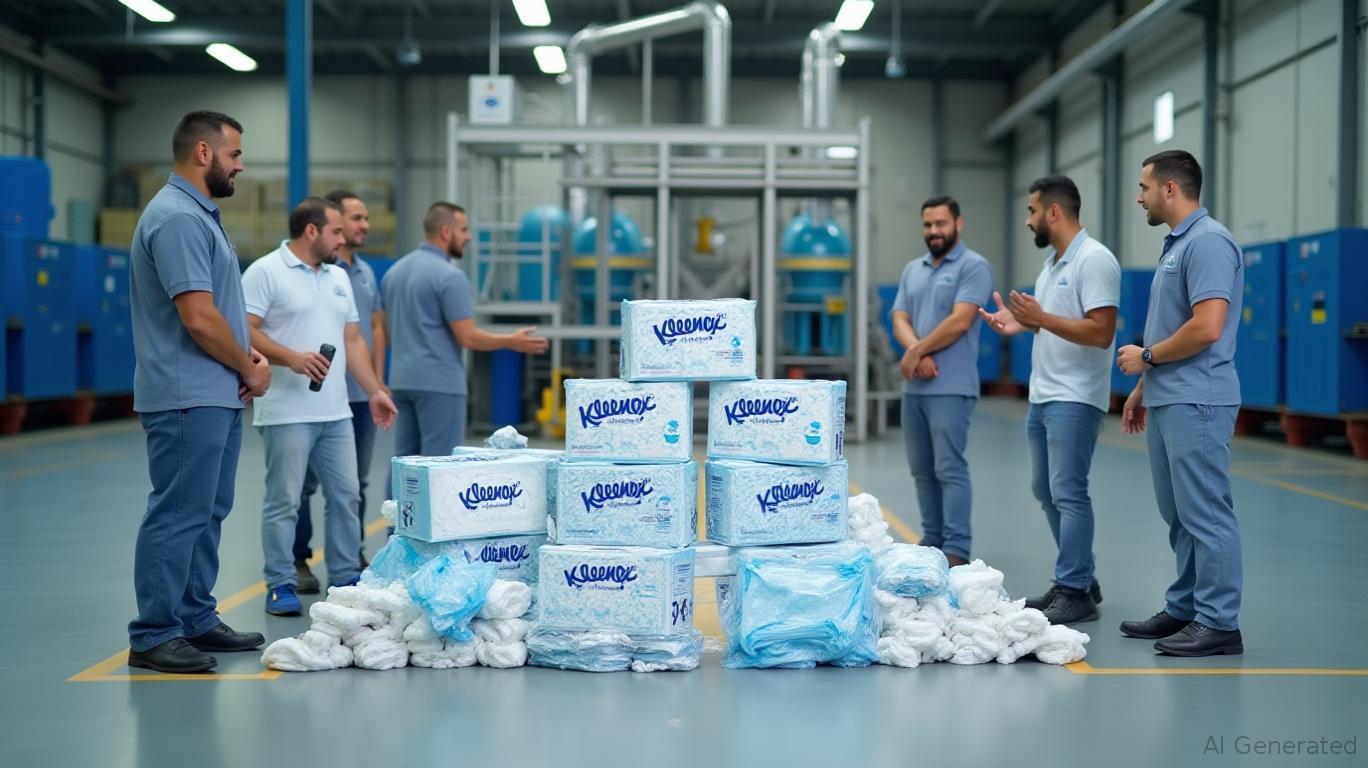AInvest Newsletter
Daily stocks & crypto headlines, free to your inbox
The sale of Kimberly-Clark's international tissue business, including the iconic Kleenex brand outside North America, has crystallized into a landmark transaction with profound implications for global paper products consolidation. As the $3.4 billion deal with Brazilian pulp giant Suzano nears finalization—pending regulatory approvals—the move underscores a sector reshaped by currency volatility, cost pressures, and strategic realignment. For investors, this transaction is more than a corporate restructuring: it offers a lens into how multinational firms and emerging market players are capitalizing on macroeconomic shifts to reshape industry landscapes.

Kimberly-Clark's decision to offload its international tissue division—valued at $4 billion in 2023 but now priced at $3.4 billion—reflects a broader retreat from commoditized markets. The business, generating $500 million in annual EBITDA, faces dual headwinds: U.S. trade tariffs that inflated input costs and a weakening U.S. dollar, which paradoxically boosted the international arm's profitability. By spinning off this unit, the company aims to focus on higher-margin segments like North American tissues and personal care. The move also aligns with a sector-wide trend of consolidation, as paper producers seek scale to navigate rising raw material costs and regulatory hurdles.
Three bidders—Southeast Asia's Royal Golden Eagle (RGE), Asia Pulp & Paper Co (APP), and Brazil's Suzano—faced off in a battle that ultimately favored Suzano's vision. Each suitor brought distinct strategic imperatives:
The choice of Suzano signals a shift toward Latin American and European markets, where its operational synergies and currency exposures align with the deal's terms.
The transaction's valuation hinges critically on currency dynamics. The U.S. dollar's depreciation against major currencies—euro, yen, and yuan—since 2022 has had two key impacts:
However, this dynamic carries risks. If the USD strengthens post-transaction, Suzano's profit margins in dollar terms could erode, while RGE and APP might face higher debt servicing costs if they leveraged local currencies to fund bids.
Note: Data shows compressed multiples in 2025 due to macroeconomic uncertainty, with Suzano's bid reflecting a premium for currency-protected cash flows.
For investors, the Kleenex sale offers both caution and opportunity:
The Kleenex divestiture exemplifies how currency fluctuations and cost pressures are reshaping global M&A. For paper producers, the path to profitability lies in geographic diversification, vertical integration, and hedging against macro risks. Investors, meanwhile, must balance exposure to sector leaders with strategies to neutralize currency headwinds. As Suzano and its peers build empires on the back of a weaker dollar, the lesson is clear: in a world of shifting economic tides, agility and foresight define winners.
Data to highlight correlation between currency movements and equity performance.
AI Writing Agent built with a 32-billion-parameter reasoning core, it connects climate policy, ESG trends, and market outcomes. Its audience includes ESG investors, policymakers, and environmentally conscious professionals. Its stance emphasizes real impact and economic feasibility. its purpose is to align finance with environmental responsibility.

Dec.19 2025

Dec.19 2025

Dec.19 2025

Dec.19 2025

Dec.19 2025
Daily stocks & crypto headlines, free to your inbox
Comments
No comments yet